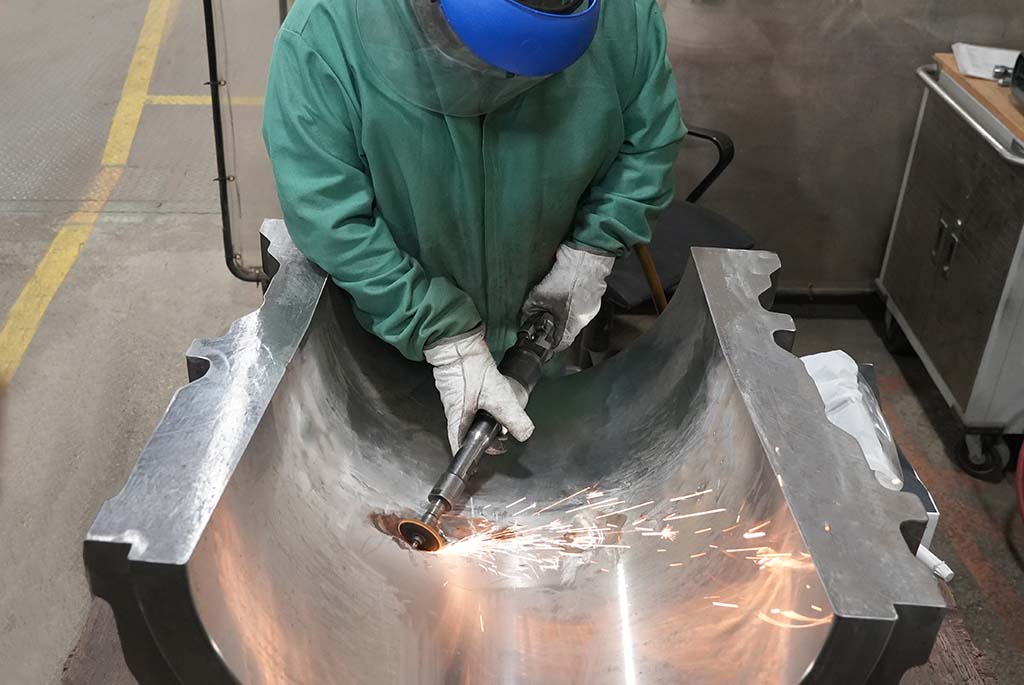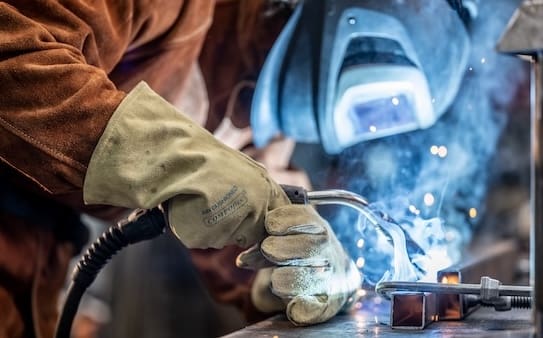Usual Welding Repair Service Issues and Just How to Address Them Efficiently
Welding repair work commonly run into a variety of issues that can threaten the integrity of the last product. Typical troubles consist of poor infiltration, porosity, and imbalance, amongst others. Each issue offers special difficulties that call for details techniques for resolution. Understanding these issues is important for welders intending to improve their abilities and results. This discussion will certainly explore these usual welding repair concerns and efficient techniques to resolve them.
Inadequate Penetration
Inadequate infiltration happens when the weld steel fails to fully fuse with the base material, resulting in weak joints and prospective architectural failures. This issue often stems from inadequate heat input, wrong electrode angle, or incorrect welding speed. Welders might run into poor penetration because of a mistake of the necessary specifications for a details material thickness or kind. In addition, contamination on the base product's surface can prevent reliable bonding, aggravating the issue. To deal with insufficient penetration, welders must guarantee appropriate setups on their equipment and keep a clean work surface. Routine assessment of welds is suggested to identify any kind of shortages early, enabling prompt corrections and the avoidance of jeopardized architectural integrity in welded settings up.
Porosity
Porosity is a common flaw in bonded joints that shows up as small gas bubbles caught within the weld metal. This issue can endanger the honesty of the weld, leading to decreased strength and potential failure under tension. Montana Mobile Welding and Repair Belgrade Fabrication. Porosity normally arises from contamination, dampness, or incorrect welding methods, which enable gases to escape right into the molten weld pool. To deal with porosity, welders must guarantee correct surface area preparation, keep a clean workplace, and utilize appropriate welding criteria. Additionally, picking the ideal filler material and securing gas can mitigate gas entrapment. Regular assessment and testing of welds can aid recognize porosity early, ensuring timely rehabilitative activities are taken, thus protecting the quality and reliability of the welded structure
Misalignment
Misalignment in welding can emerge from various factors, consisting of incorrect arrangement and thermal growth. Recognizing the origin is important for effective resolution. A number of correction strategies are available to realign components and assure structural honesty.
Reasons for Misalignment
Welding misalignment commonly comes from a selection of underlying problems that can jeopardize structural integrity. One primary cause is improper fit-up of parts before welding, which can result in gaps and unequal surface areas. Variants in thermal growth throughout the welding process can also lead to distortion, specifically if the products being joined have various coefficients of development. Additionally, insufficient clamping and fixturing may fail to hold elements firmly in place, resulting in movement during welding. Inadequately conserved devices, including welding devices and tools, may present variances in the weld bead, additional contributing to imbalance. Finally, operator mistake, originating from not enough training or experience, can likewise play a substantial duty in developing misaligned welds.
Improvement Methods Readily Available
Addressing misalignment effectively requires a combination of rehabilitative techniques customized to the particular issues at hand. One typical approach is the use of jigs or components to hold elements in the correct placement during welding, ensuring regular positioning. In addition, pre-heating the products can aid lower distortion and enhance fit-up. For significant imbalance, mechanical realignment techniques, such as making use of hydraulic jacks or clamps, can be utilized to deal with the placement before welding. Post-weld heat therapy may likewise be required to eliminate tensions brought on by imbalance. Mindful inspection and change throughout the arrangement stage can stop imbalance problems from coming to be substantial troubles, advertising a smoother welding process and enhancing general structural honesty.
Distortion
Distortion is a common challenge in welding that can develop from different variables, consisting of uneven heating & cooling. Recognizing the sources of distortion is essential for implementing efficient avoidance methods. Resolving this concern not only enhances architectural integrity however likewise boosts the total quality of the weld.
Reasons for Distortion
When subjected to the intense warmth of welding, products frequently undertake adjustments that can lead to distortion. This phenomenon primarily emerges from thermal expansion and contraction during the welding process. As the weld location warms up, the product increases; upon air conditioning, it gets, which can produce internal stress and anxieties. Furthermore, unequal heating across a workpiece can intensify these anxieties, causing bending or flexing. The sort of product likewise plays a significant function; metals with differing seam welding thermal conductivity and coefficients of development might react in a different way, leading to unpredictable distortions. Bad joint layout and insufficient fixturing can contribute to misalignment during welding, boosting the probability of distortion. Comprehending these causes is welding cast aluminum important for reliable welding repair service and prevention strategies.
Prevention Techniques
Reliable avoidance strategies for distortion throughout welding concentrate on managing warmth input and making sure proper joint layout. Keeping a constant heat input aids to minimize thermal growth and tightening, which can bring about distortion. Making use of techniques such as pre-heating the workpiece can also minimize the temperature slope, advertising uniform heating. Additionally, choosing ideal joint layouts, such as T-joints or lap joints, can enhance stability and lower anxiety concentrations. Applying appropriate fixturing to protect the workpieces in position better help in maintaining alignment during the welding process. Staggered welding sequences can distribute heat more evenly, preventing localized distortion. By using these techniques, welders can considerably reduce the probability of distortion and enhance the overall quality of their welds.
Breaking
Fracturing is a typical issue come across in welding fixings, usually arising from various factors such as improper air conditioning prices, product choice, or insufficient joint preparation. The occurrence of cracks can substantially compromise the integrity of the weld, causing prospective failures during operation. To resolve this concern, welders need to first analyze the origin triggers, making sure that products work and suitably picked for the particular application. In addition, regulating the cooling price during the welding procedure is important; rapid air conditioning can induce stress and lead to fracturing. Correct joint design and preparation additionally add to minimizing the threat. Carrying out these approaches can improve weld quality and resilience, inevitably decreasing the possibility of cracking in ended up weldments.

Incomplete Fusion
A significant issue in welding repair services is incomplete fusion, which occurs when the weld steel does not properly bond with the base product or previous weld passes - Montana Mobile Welding and Repair Fabrication. This flaw can result in weak points in the joint, potentially compromising the integrity of the bonded framework. Factors adding to insufficient blend consist of not enough heat input, inappropriate welding strategy, and contamination of the surface areas being joined. To resolve this problem efficiently, welders should ensure correct pre-weld cleansing and surface preparation, in addition to readjust their welding specifications to accomplish ample penetration and fusion. Routine inspection during the welding procedure can also assist recognize insufficient fusion early, enabling timely rehabilitative actions to improve the general high quality of the weld
Overheating
While welding repairs can improve structural integrity, overheating provides a considerable difficulty that can bring about product destruction. Too much heat throughout welding can modify the mechanical homes of steels, resulting in minimized strength, boosted brittleness, and bending. This sensation is particularly vital in high-stress applications where architectural integrity is extremely important. Recognizing overheating can involve visual assessments for staining or distortion, as well as keeping an eye on temperature during the welding procedure. To minimize the dangers related to getting too find out hot, welders must use suitable methods, such as controlling warm input, changing traveling rate, and making use of ideal filler products. In addition, applying pre- and post-weld warmth treatments can assist bring back product buildings and boost the total top quality of the repair service, ensuring long-lasting performance and safety and security.
Regularly Asked Inquiries
What Are the Typical Indicators of a Welding Defect?

Exactly How Can I Examine My Welds for Top quality?
To test welds for quality, one can use visual inspections, ultrasonic testing, and radiographic methods. Each strategy guarantees architectural integrity, identifies issues, and verifies adherence to specified requirements, eventually improving the reliability of the bonded joints.
What Security Safety Measures Should I Take While Welding?
When welding, one should prioritize security by wearing proper personal safety equipment, guaranteeing proper ventilation, securing flammable products away, preserving a tidy workspace, and recognizing surroundings to stop crashes and injuries.
Can I Repair a Weld Without Redesigning the Entire Joint?
Fixing a weld without renovating the whole joint is feasible, depending upon the damage (Belgrade Welding). Methods such as grinding, adding filler material, or using a welding procedure can effectively attend to certain defects while preserving the bordering structure
What Devices Are Crucial for Efficient Welding Repairs?
Crucial tools for reliable welding repair services consist of a welding equipment, cable brush, grinder, safety gear, clamps, and filler materials. Each device plays an essential duty in making certain high quality and security throughout the repair service process. Porosity generally emerges from contamination, dampness, or improper welding strategies, which allow gases to run away into the molten weld pool. Poorly kept tools, including welding devices and devices, may introduce variances in the weld bead, more contributing to misalignment. When subjected to the extreme warmth of welding, materials commonly go through modifications that can lead to distortion. Splitting is an usual issue run into in welding repairs, typically resulting from various aspects such as inappropriate air conditioning prices, product selection, or poor joint preparation. A substantial problem in welding fixings is incomplete blend, which occurs when the weld metal does not sufficiently bond with the base material or previous weld passes.